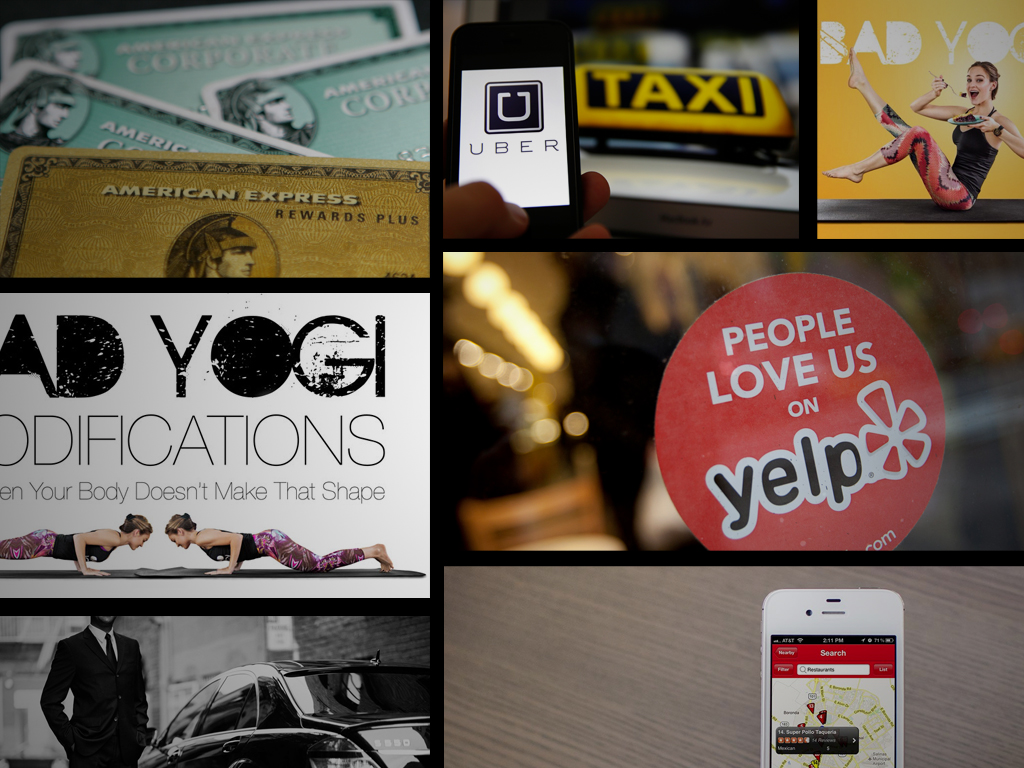The question, “Who are you?” can be either simple or complex, depending how philosophical you want to get. Many people live their lives without really contemplating the latter. Brands don’t have that luxury. In fact, figuring out the answer should arguably be their first order of business – before any products stock shelves or press releases hit newswires.
A brand story isn’t just a valuable marketing asset, it’s also a brand’s guiding principles and impacts every facet of the organization. In other words, it’s not just a marketing message, it’s also a sales pitch and a roadmap for the C‑suite.
Momentology surveyed the proverbial landscape and identified 10 brands that truly know themselves and their stories – and have had major marketplace impact as a result.
In taking a closer look at these brands, we discovered seven common traits. Brands that have nailed their brand stories:
1. Start With Problems
From the beginning, many of these brands have identified market needs and/or injustices and, simply, have solved them. The result is a compelling brand story.
“It’s important to have a story that people can understand and connect with,” said Jennifer Eggers, group director of brand communication at branding firm Siegel+Gale. “Especially with newer brands, people care and expect that the brand is coming into existence for a good reason – to solve a problem, to change how we do things, to meet a specific need – and the story is central to communicating the brand’s purpose.”
2. Embrace The Underdog Status
Many of these brands were/are underdogs who were undeterred when it came to tackling titans of industry. They’re the so-called disruptors. And they have good stories to tell as a result.
3. Redefine An Experience
A good brand story is good in part because it has something to say – and, many times, that’s because the brand itself has taken an experience or an industry and turned it on its head.
4. Foster Communities Of Rabid Fans
Brands that have a clear identity and purpose are able to form more meaningful connections that result in truly devoted fans. It’s not just a brand or a product, but rather a means to an end personified by said brand. In other words, the brand is integral to a coveted lifestyle. At the same time, this can also result in detractors, but, branding experts say, that’s just fine.
5. Have Visible Founders
There’s passion in these brands. Their biggest fans, often, are Employee #1. In these cases, the founder does not simply hand the reins over and watch checks roll in after certain objectives have been realized, but rather retains an active role in the company he or she started and holds the title of Chief Evangelist.
6. Know Who They Are And What They Stand For
While many websites have more elaborate versions, each of these stories can be distilled into a sound byte that represents all the company exemplifies.
7. Do Good
Many of these brands incorporate an element of social good into their stories – whether that’s giving back to communities or fostering sustainability or helping consumers find their best selves. And, again, these lofty goals make for good stories.
So which brands have an exceptional brand story? Here are 10 examples.
Toms Shoes

Brand Story: According to the website, which includes The Toms Story, founder Blake Mycoskie “witnessed the hardships faced by children growing up without shoes” while traveling in Argentina in 2006. “Wanting to help, he created Toms Shoes, a company that would match every pair of shoes purchased with a new pair of shoes for a child in need,” the site says.
In a Nutshell: One for One.
Measure of Success: To date, Toms says it has given more than 50 million pairs of shoes to children in need, has helped restore sight to over 360,000 people, and has helped provide over 250,000 weeks of safe water in six countries. In addition, Toms launched its Bag Collection in 2015. With each bag purchased, the brand says it will help provide a safe birth for a mother and baby in need.
Why it Works: In an era of unprecedented competition and an abundance of comparison data, Stephen Golub, vice president of digital marketing agency DXagency, notes a new consideration point has become increasingly important: Do people like you?
“With social media, brands are now more than their price points, they are living, breathing entities with personalities, goals and values,” Golub said. “Consumers want to feel not only like they are getting a good product, but that they are getting it from a good brand. For example, Toms was able to enter an extremely competitive industry with products very similar in price, quality and style to that of its established competitors. They were able to do so by combining their product offering with a robust brand story that consumers could get behind and feel good about being a part of.”
Also: It solves a problem, has a visible founder and does good.
Warby Parker

Brand Story: In its Story, eyewear retailer Warby Parker says it was founded as a rebellious upstart to tackle the problem of expensive eyewear after one of its founders lost his glasses on a backpacking trip and couldn’t afford to replace them as a grad student. What’s more, like Toms, Warby Parker partners with nonprofits such as VisionSpring to distribute a pair of glasses to someone in need for each pair sold.
In a Nutshell: Good eyewear, good outcome.
Measure of Success: Warby Parker says it has distributed over one million pairs of glasses and has trained over 18,000 men and women to give basic eye exams and bring glasses to their communities with VisionSpring.
Why it Works: Warby Parker solves a problem, has a rebellious spirit and does good.
Also: See Toms.
GoPro

Brand Story: In a letter from founder and CEO Nicholas Woodman on the GoPro site, he writes, “GoPro helps people capture and share their lives’ most meaningful experiences with others – to celebrate them together. Like how a day on the mountain with friends is more meaningful than one spent alone, the sharing of our collective experiences makes our lives more fun. The world’s most versatile cameras are what we make. Enabling you to share your life through incredible photos and videos is what we do.”
Befittingly, the brand also has a video story:
In a Nutshell: Think it. See it. Do it.
Measure of Success: The brand recently added a Periscope integration, allowing users to broadcast live from their HERO4 Black or Silver cameras, among countless other partnerships, including one with the NHL. It also recently announced it expected 2015 revenue to be $1.6 billion.
Why it Works: It’s all about community and sharing. According to boilerplate, what began as an idea to help athletes document themselves, GoPro has “become a standard for how people capture themselves engaged in their interests, whatever they may be.”
SoulCycle

Brand Story: The fitness brand says its vision was “to create an alternative to the fitness routines that felt like work.”
Now the brand says it provides “an inspirational, meditative fitness experience” called a “cardio party” that is “the best part of our riders’ day, every day and that has transformed their relationship to exercise.”
In a Nutshell: Find your Soul.
Measure of Success: The company announced its intent to go public in July 2015. It reportedly plans to raise up to $100 million. And, as of September 30, the self-proclaimed lifestyle brand says it has over 383,000 riders in 48 U.S. studios.
Why it Works: SoulCycle has redefined the exercise experience and wholeheartedly embraced its community of superfans.
“It’s expensive, it’s cult-like and if you’ve ever been, you know it’s absolutely unquestionably over the top. And it’s unapologetic in its extremity,” said 180LA Executive Strategy Director Kasi Bruno. “Instructors swear, sweat and whip their hair back and forth…and they charge you a fortune to live that with them. But for every SoulCycle zealot there are dozens more who count themselves out.”
And, according to Bruno, that’s okay.
“The best brand stories repel more people than they attract. Simultaneously magnetic and uncomfortable, strong brand narratives act as a rallying cry for some, but as a snub for most,” she said. “And it works like a charm. Brands that tell a good story do three things really well: they’re unapologetic about their point of view, they craft stories that are strong enough to repel people, and they immerse believers in the narrative.”
Chipotle

Brand Story: Chipotle says it is in the business of good food. It seeks to use high-quality raw ingredients, classic cooking techniques and distinctive interior design to bring elements of fine dining to quick-service restaurants. At the same time, Chipotle also says it seeks to cultivate a better world with respect for animals, farmers and the environment.
In a Nutshell: Food with Integrity.
Measure of Success: It’s TBD in this particular case. After headlines about E. coli, the brand, which operates more than 1900 restaurants, is hosting a national employee meeting on February 8 – and will close its locations for four hours that day. In a statement, founder Steve Ells said the brand’s new enhanced food safety plan “will establish Chipotle as an industry leader in food safety.”
Why it Works: Chipotle transformed the idea of what was possible with fast food, doing good for both consumers and farmers, totally redefining the experience in the process. The result has been an enthusiastic fan base. And the founder is a visible presence in the brand’s current crisis.
Uber

Brand Story: Uber says it is evolving the way the world moves.
“By seamlessly connecting riders to drivers through our apps, we make cities more accessible, opening up more possibilities for riders and more business for drivers,” the brand adds.
In a Nutshell: Your Ride, On Demand.
Measure of Success: The brand recently celebrated its billionth Uber trip and, according to Business Insider, it is worth more than $62.5 billion and is raising $2 billion in funding.
Why it Works: Uber is the rebellious taxi alternative that has redefined transportation.
Airbnb

Brand Story: Airbnb says it is a trusted community marketplace for consumers to list, discover, and book unique accommodations for unique travel experiences.
In a Nutshell: Welcome home.
Measure of Success: The brand projected more than one million people would stay in an Airbnb on New Year’s Eve 2015. It offers accommodations in more than 34,000 cities and 190 countries.
Why it Works: Again, Airbnb has challenged the hotel industry and totally redefined an experience. As a result, as noted in its brand story, it boasts a community of loyal users.
Under Armour

Brand Story: Under Armour calls itself the originator of performance apparel, or athletic gear designed to keep athletes “cool, dry and light throughout the course of a game, practice or workout.”
Further, the brand notes its mission originated in the pursuit of a t‑shirt that provided compression and wicked perspiration off skin, regulating temperature and enhancing performance. Under Armour now says it seeks to make all athletes better through passion, design and the relentless pursuit of innovation.
In a Nutshell: Protect This House. Measure of Success: The brand most recently partnered with actor/wrestler Dwayne Johnson and, at CES, debuted what it calls a connected fitness product portfolio including fitness system UA HealthBox, a smart shoe and two models of wireless headphones, all of which are powered by health and fitness platform UA Record. In October, the company announced third quarter revenue of $1.2 billion.
Why it Works: The U in UA might as well stand for “Underdog.” But the Little Performance Apparel Company That Could solved a unique problem. Under Armour has also really perfected its voice and how to communicate with its legion of devotees.
Beats

Brand Story: Beats says it brings the energy, emotion and excitement of playback in the recording studio back to the listening experience and it has introduced a new generation to the possibilities of premium sound entertainment.
In a Nutshell: Beats By Dre
Measure of Success: Apple acquired Beats in 2014 for $3 billion.
Why it Works: The visible founder, Dr. Dre himself, tackled the problem of subpar headphones and, as a result, redefined the way consumers listen to music and found an incredible market, including no shortage of celebrity clientele.
Virgin America

Brand Story: Virgin America says its mission is to make flying good again, with new planes, attractive fares, top-notch service and a host of amenities that reinvent domestic air travel.
“The Virgin America experience is unlike any other in the skies, featuring mood-lit cabins with WiFi, custom-designed leather seats, power outlets and a video touch-screen at every seatback offering guests on-demand menus and countless entertainment options,” the brand adds.
In a Nutshell: Make flying good again.
Measure of Success: In 2015, the brand launched an integration with Google Street View that allows consumers to tour plane cabins, as well as a partnership with Netflix, which enables passengers to stream content in flight. It also announced net income of $73 million for the third quarter of 2015.
Why it Works: Virgin America has tackled the problem of domestic air travel and refined the typically dull and sometimes painful experience in the process, including everything from its catchy in-flight safety video, which as more than 11 million views to date, to its nearly six-hour video replicating the experience of flying on other airlines. It not only knows its voice and clearly communicates its message throughout, it practices what it preaches.
https://www.youtube.com/watch?v=DtyfiPIHsIgWhat’s your favorite brand story? Why?




